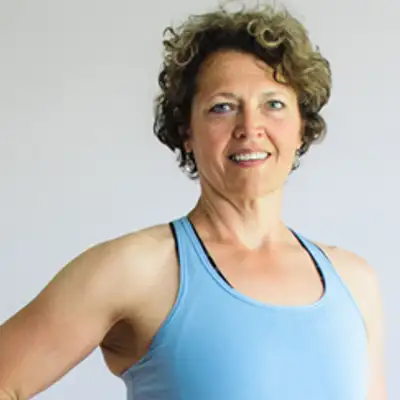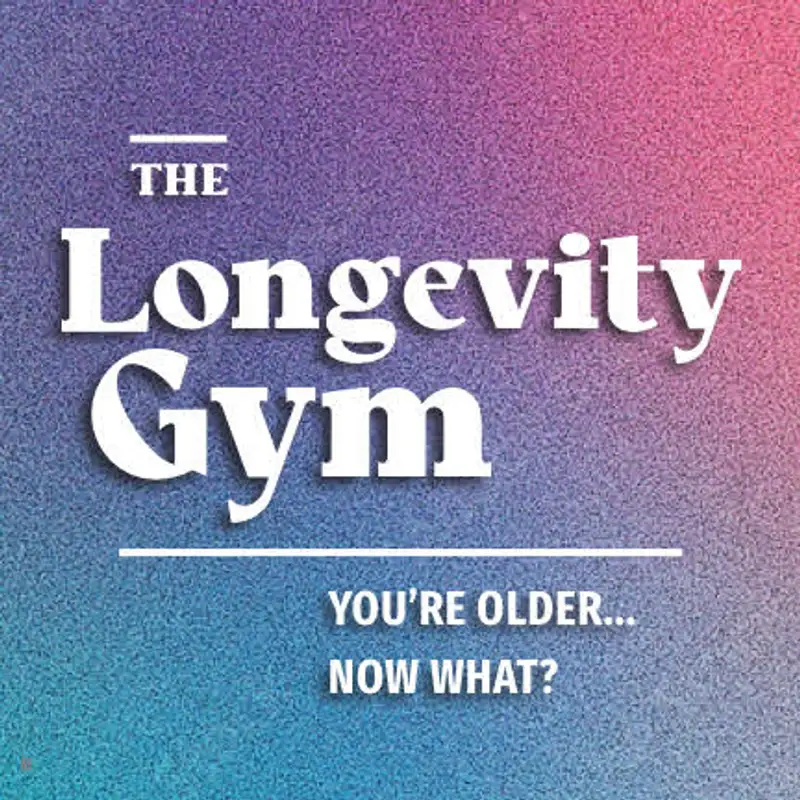How to age as slowly as possible - part three
Download MP3Pam Strand (00:00):
Welcome to the Longevity Gym. Hello, my name is Pam Strand. I'm your podcast host. The Longevity Gym is about living longer, stronger, and better. Today's episode is the third and final episode dedicated to learning more about the biological aging process. I find it fascinating and helpful to learn what is happening in the body as it ages and to learn what we can do about it. In this series, I have referenced and shared what I have learned about a 2013 research study that identified nine hallmarks of aging. These researchers categorized these nine hallmarks of aging into three groups. The first group explains the four hallmarks considered the primary hallmarks or those that explain the age-related damage to our cells. I discussed these in episode seven. In episode eight, I describe the second group called the antagonistic hallmarks. These speak to the body's response to the cellular damage caused by aging.
(01:03):
In today's episode, I'm going to share what I've learned about the third group of hallmarks. These are called the integrative hallmarks, which come about because of the accumulated impact of the previous two groups. Let's begin. There are two integrative hallmarks, stem cell exhaustion and altered intercellular communication. Let's look at the first stem cell exhaustion. Stem cells are undifferentiated cells that turn into differentiated ones when the body needs them to support the growth and repair of cells and tissues. Stem cells are like raw materials ready to be turned into something very specific. They also play a role in signaling within the body that improves tissue function, regulation and health. Stem cells also support the repair and replacement of red blood cells, white blood cells, and solid tissues like skin, muscles and bones. Stem cells are located throughout the body and where they are located influences what type of cell they turn into.
(02:12):
For example, a stem cell in our muscular system is likely to turn into a muscle cell based upon their source. Stem cells can turn into more than one type of cell, which makes them very valuable within the body. They play a vital role in our health because of their vital role. A reduction in their activity, which is called stem cell exhaustion, has significant ramifications for our health and the aging process. The decrease in the number of stem cells produced in our body can lead to many diseases and many general issues. Our immune system can be suppressed through the reduced production of white blood cells, which are an important defense against bacteria
(02:58):
And virus. Stem cell exhaustion can also lead to muscle loss, frailty, and the weakening of bones. DNA. Damage in environmental challenges such as pollution and chemicals have the biggest impact to stem cell production. The greater the damage, the greater the reduction in impairment of stem cell activity. Limiting our environmental exposures to pollutants and toxins helps clear out our systems in order to improve stem cell activity, the best lifestyle ways to support stem cell activities through intermittent fasting exercise and cold thermogenesis or exposure to cold temperatures. The second integrative hallmark is altered intercellular communication. We need our cells talking to one another and they do so through signals such as hormones and neurotransmitters. As we age, the signaling environment throughout the body tends to become disrupted. It simply just doesn't work as well as it used to. The more breakdown in signaling the more cells are not getting the right information to do their jobs. As a result, our metabolism breaks down. Our immune system doesn't function effectively. Organs aren't on the top of their game, among other things. The most common cause is the inflammation that is produced by all of the previous eight aging hallmarks. In addition, inflammation that comes from our lifestyles exasperates the breakdown in communication. This is why it's important as we get older to pay attention to our stress levels and do what we can to alleviate stress. Stress reduction is an anti-aging strategy.
(04:51):
That concludes the series of conversations on the hallmarks of aging and the lifestyle interventions that can slow even reverse the aging process. As we conclude, I want to offer up some additional thoughts as I study the science of longevity. I keep coming back to the phrase physiology matters. Simply put, it becomes more important as we age. And taking care of our physiology takes us beyond exercise and eating right. Exercise and a nutritious diet will always be the basis for health and fitness. And they impact almost every function in the body. In fact, I think that they or I feel that they become more important as we age. They actually become something like medicine for our cells. At least that's what it feels like to me. But the work to slow aging and to stay healthy and strong as long as possible does go beyond exercise and eating right.
(05:50):
It's hard to come away from this series without being intrigued by intermittent fasting. The research keeps pointing the benefits to our cellular and tissue health, our metabolism, and keeping the body's internal environment healthy, but it doesn't have to be extreme to be beneficial. As you have heard me describe, a 12 hour window for eating and not eating can be very effective. We are also finding intriguing information on different types of foods and the beneficial impact of adding them to one's diet. Sirtuin-rich foods that were discussed in the previous episode are an example of those foods, and remember, there is no one silver bullet when it comes to food and diet. An optimal diet is varied and diverse. The Mediterranean diet has been researched fairly deeply and comes out on top, but the top ways of eating or the top diets share some certain things in common.
(06:48):
They're plant-based. They're filled with whole grains and legumes, lean proteins, healthy fats, and little or no sugar. The discussion of environmental factors was something eyeopening to me. It brought environment much closer to home. I started to be much more aware of the quality of the air I breathe, not just outside, but inside my home and my workspace. I've put air purifiers and humidifiers in my home, and that has certainly improved my allergies and reduced dryness in my breathing apparatus. I feel like I can breathe better, and I know it has reduced stress on my body. I've also had many conversations with people about looking at and reducing the added chemicals that we come in contact with, not only in the foods we consume, but in products like toothpaste, skin cleansers and moisturizers, even the clothes we wear. In my mind, building awareness around what stresses your body and its systems is a must for longevity.
(07:55):
Aging disrupts the homeostasis in our bodies, and we don't want to add to that disruption with stress that we can avoid or that we can mitigate by building up our capacity to relax the body. There is so much we can do to calm the body and restore its essential balance. Breath work, meditation, gentle movement, rest, vacations, they're all important for our physiological health sleep. It's exciting to see the research and work around improving sleep quality. If you're interested in recharging your resilience as you age, point your attention to sleep. Sleep is definitely a resilience building rockstar. And data. There is so much potential in the data that's being generated by our wearable devices such as Fitbits, the Apple Watch, the Oura ring, and the biostrap. These hold a lot of promise in helping us understand how our bodies
(08:54):
Are responding to our lifestyles. They are great accountability partners for getting our steps in and in looking at our heart rate and our heart health. I think we are just tapping though their potential for understanding sleep, stress, and even the impact of practices like breath work and meditation. The key is that the data is our data, and it is real time. If we are interested in personalized fitness and longevity practices, these devices accelerate our ability to tailor what we do to those things that have the most benefit to our bodies, and therefore to us, we become more powerful in crafting our journey in health and fitness with these devices. It'll be exciting to see where the wearable manufacturers take these devices and to see how we can use them on a very practical level in our everyday life. There is so much. It's so easy to get overwhelmed and unsure where to start.
(09:57):
Remember, life is a long game and not a game where you want to be rushing to the finish line. Be in it for the long run. Focus on one area and pick ideally one thing to work on at a time. See what works and what doesn't. Focus on what does work and keep building from there.
(10:18):
I hope this episode series has helped you better understand the aging process and what you can do about it to remain strong, healthy, and resilient for as long as possible. If you have any questions or want to share a win, please email me. I'd love to hear from you. My email address is Pam@strandfitnessonline.com. Another way to stay in touch is to sign up for my newsletter. My emails will keep you apprised of new podcast episodes and also share news on my upcoming offerings. Stay tuned. I hope to have something new to share after the first of the year. You can sign up for my email using the form below in the show notes or go to my website, strand fitness online.com. There's a signup form at the bottom of my homepage. Thanks for tuning in and I will see you in the next episode. Have a great day.
Creators and Guests


